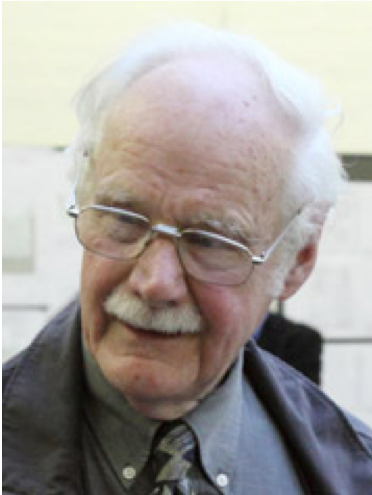Martin Dodson (1932-2010)
Dr Martin Dodson, one of the pioneers in the quantitative measurement of the ages of rocks by isotopic methods in the 20th Century, died on 27th June 2010.

Born in 1932 and a pupil at Bootham School, York, from 1947-1950, Martin went up to St John’s College, Cambridge, in 1950 to read for the Natural Sciences Tripos. His main subject was physics but, significantly for his future career, his degree programme also included geology as a subsidiary. Following a period of research at Cambridge after graduation, Martin joined the UK Atomic Energy Authority as a Scientific Officer in 1956, working on the diffusion and flow of gases in porous solids. However, he soon returned to the academic fold, becoming a Research Fellow in the Department of Geology and Mineralogy at Oxford University in 1958, where he was a member of the geochronology group. Geochronology, the science of determining the age of rocks and minerals, was still in its comparative infancy as a discipline and Martin was to be one of the scientists instrumental in its rapid evolution. Indeed, one of his first tasks, in the absence of a suitable commercially available instrument, was to build a gas mass spectrometer. Whilst at Oxford, Martin completed his DPhil, which he was awarded in 1963 and was appointed as Lecturer in Geochronology and Isotope Geology at University of Leeds, where he remained until his retirement in September 1992.
From the late 1960s it had become apparent that many age measurements did not record the age of formation of the rock sample, but some later stage in its geological history. It was in this area of research that Martin’s insights from theoretical physics became most strongly apparent, leading to his greatest scientific contribution to the field of geochronology. He developed a quantitative physical model, based on thermal diffusion, which related the measured age to a specific stage in the cooling of the rock from higher temperatures. This model went on to underpin the developing science of thermochronology and his 1973 paper, published in Contributions to Mineralogy & Petrology, continues to be regularly cited to this day (1200 citations, 50 citations in 2009 alone). Further development of the model in subsequent years led to quantitative modelling of variations in isotopic concentrations within samples that result from losses by diffusion and, in collaboration with Elizabeth (Buffy) McClelland, he extended these ideas into the field of palaeomagnetism.
Martin also made several fundamental technical contributions to the measurement of isotopic compositions, including the first systematic studies of error relationships in isotope dilution analysis and in particular the use of ‘double spiking’ to achieve greater precision and accuracy. He was also responsible for recognising the potential of diffusively enriched 38Ar in the early days of potassium-argon dating.
Extract from University of Leeds, 7 July 2010
